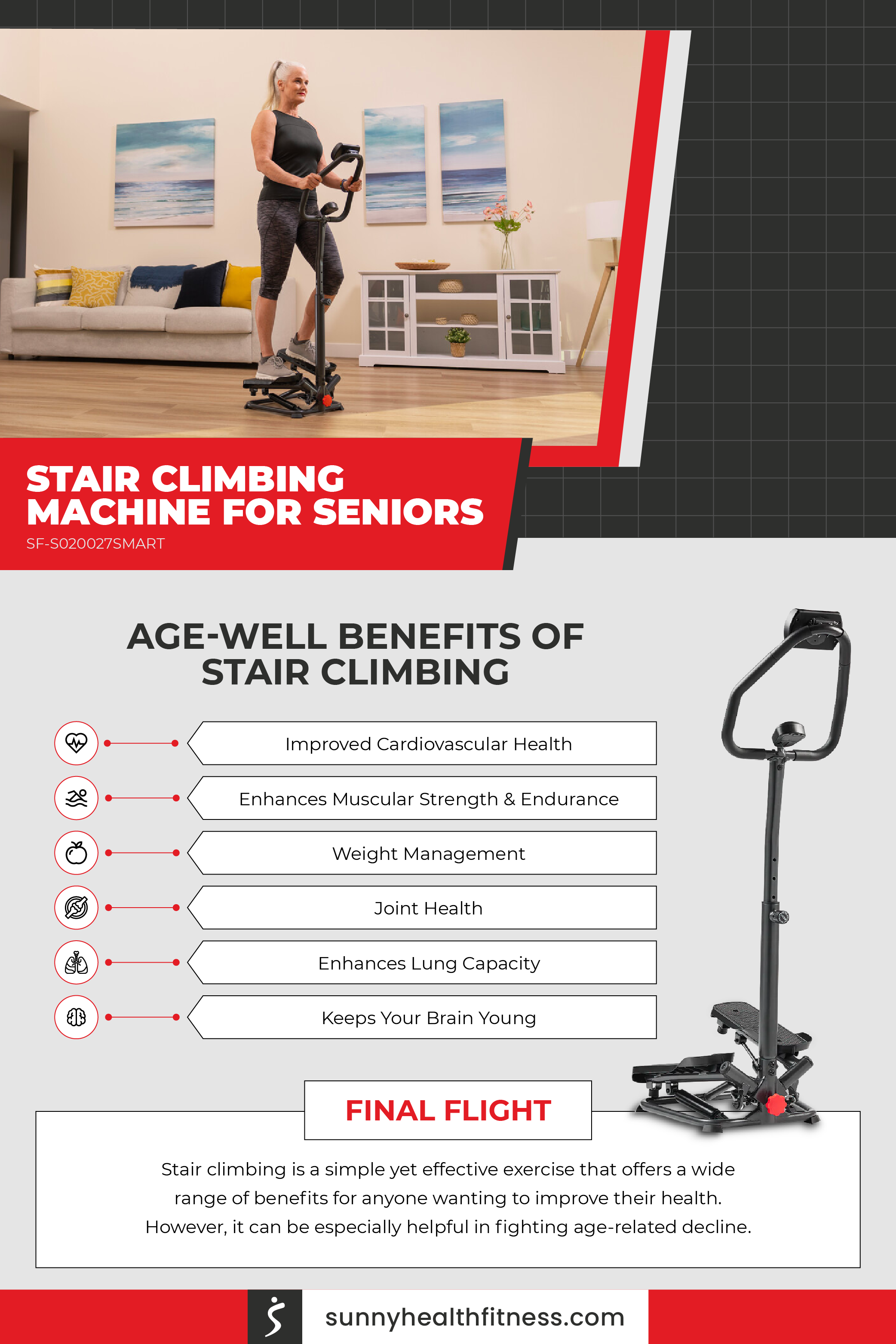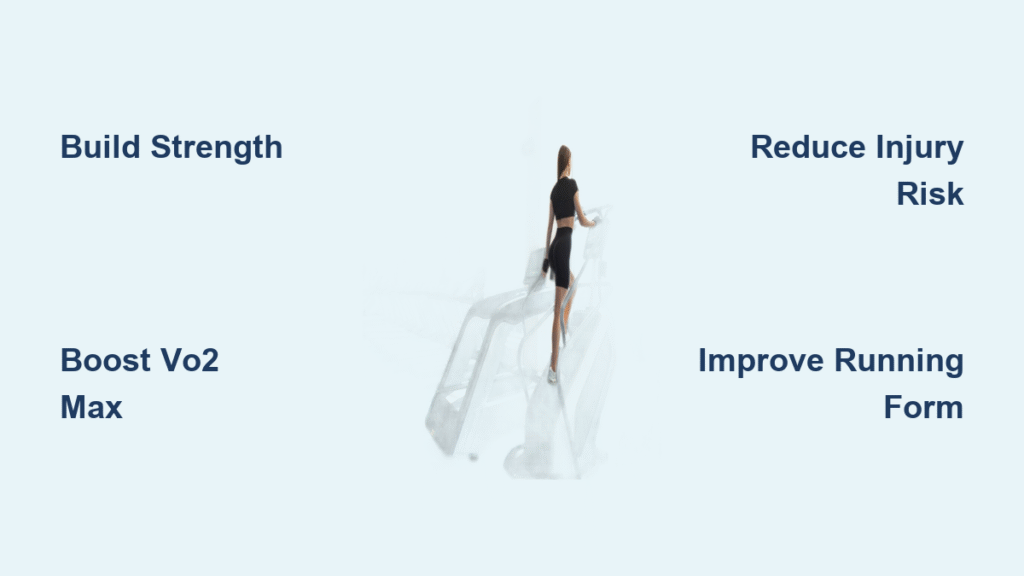Your marathon training just hit a wall—literally. That nagging knee pain flares up every time you increase mileage, yet your race is only eight weeks away. While your running buddies log endless miles, you’re sidelined, watching fitness fade. Here’s the breakthrough: stair climber workouts deliver the cardiovascular gains you need while cutting joint impact by 60%, making them the ultimate cross-training weapon for injury-prone runners.
This comprehensive guide transforms stair machines from boring gym equipment into precision training tools that build VO2 max, strengthen running-specific muscles, and prepare you for hilly courses—all without the pounding that leads to injury. By the time you finish reading, you’ll know exactly how to integrate stair climber workouts for runners into your training plan to break through plateaus and arrive at the starting line stronger than ever.
Why Your Running Performance Needs Stair Climber Training

Build Running-Specific Strength Without Damage
Your quadriceps work 23% harder during stair climbing compared to level-ground running at equivalent effort. Glute activation increases 40-60% due to the hip extension required against gravity. These strength gains directly translate to improved running economy and reduced injury risk, particularly for runners with weak hip stabilizers. Unlike weight room exercises, stair climbing mimics your natural running motion while strengthening the exact muscles that propel you forward.
Pro tip: Focus on driving through your heels during each step to maximize glute engagement—this subtle technique adjustment can increase activation by another 15-20%.
Achieve Higher VO2 Max Gains Than Flat Running
Stair climbing at 75-85% maximum heart rate for 20-30 minutes triggers faster oxygen uptake improvements than flat running. The vertical displacement forces your cardiovascular system to work harder while maintaining the same perceived effort as an easy run. Most runners see 8-12% VO2 max increases within eight weeks of incorporating two to three stair sessions weekly.
Reduce Injury Risk While Maintaining Training Load
Stair climbers cut impact forces by 50-60% compared to outdoor running while maintaining training intensity. This allows you to build aerobic fitness during injury recovery phases or when increasing training load safely. The controlled environment also eliminates variables like weather and surface conditions that often lead to overuse injuries.
Your Step-by-Step Stair Climber Integration Plan

Base Building Schedule for Injury-Prone Runners
Start with two stair sessions weekly, 20-30 minutes at 65-75% max heart rate. Focus on consistent stepping rate of 60-70 SPM while maintaining upright posture. These sessions replace easy runs or recovery days, building aerobic base without additional joint stress. Track your vertical feet gained—beginners should aim for 500-1000 feet per session during this phase.
Build Phase Progression for Performance Gains
Increase to three sessions weekly, incorporating intervals and tempo work. Mix steady climbs with structured intervals like 8×2 minutes at 85% max heart rate with equal recovery. Target 1500-2000 vertical feet per session during this phase. This progression builds both cardiovascular capacity and muscular endurance specific to running demands.
Peak Phase Fine-Tuning Before Races
Reduce to 1-2 maintenance sessions focusing on power and speed. Short, intense intervals like 12×30 seconds at 90-95% max heart rate maintain fitness while allowing full recovery for key running workouts. Target 1000-1500 vertical feet maximum. This preserves your hard-earned fitness without adding unnecessary fatigue before race day.
Essential Stair Climber Workouts Every Runner Needs
Endurance Building Sessions That Transfer to Running
Steady State Climb: 30-45 minutes at 70-75% max HR, maintaining 60-70 SPM. Focus on controlled breathing—inhale for two steps, exhale for two steps. Track heart rate drift; minimal increase indicates good aerobic fitness.
Progressive Pyramid: 5-10-15-20-15-10-5 minute segments at progressively harder resistance levels. Start at level 4 resistance, increase by 2 levels every segment. This mimics the variable terrain of trail races while building mental toughness.
Speed Intervals That Improve Your Finishing Kick
High Cadence Bursts: 30 seconds at 90-100 SPM followed by 90 seconds recovery at 60 SPM. Complete 12-16 repetitions. This improves neuromuscular coordination and running cadence efficiency—most runners naturally increase outdoor cadence by 5-8% after four weeks.
Power Intervals: 45-second all-out efforts at maximum resistance you can maintain. Take 2-3 minutes complete rest between efforts. These develop finishing kick ability for 5K and 10K races while building lactate buffering capacity.
Perfect Your Stair Climbing Technique for Running Transfer
Posture and Form Essentials That Prevent Injury
Stand tall with slight forward lean from ankles—not waist. Keep shoulders relaxed and chest open. Your foot should contact the entire pedal surface; avoid tiptoe stepping that overworks calves. Maintain natural arm swing similar to running, using light handrail contact only for balance.
Critical mistake to fix immediately: Overstriding by taking steps too large reduces efficiency and increases knee stress. Focus on quick, light steps at 60-80 SPM for most workouts. Your knees should track over your toes without excessive forward reach.
Handrail Dependency Correction Protocol
Lighten handrail contact gradually over 4-6 sessions. Start by holding lightly, progress to fingertip contact, eventually minimizing use entirely. This increases core engagement and mimics natural running posture. Reset your posture every 5 minutes—check alignment from head to feet to maintain proper form throughout your session.
Track Your Progress With Runner-Specific Metrics
Key Performance Indicators That Matter
Track vertical feet gained per session—beginners target 500-1000 feet, advanced runners reach 3000-4000 feet. Monitor steps per minute (SPM) for consistency: 60-70 for endurance, 80-90 for tempo, 90-100 for speed work. Record average watts as power output measurement: 150-250 watts for endurance, 300+ for intervals.
Benchmark Progressions to Measure Success
Beginner Milestone: 15 minutes continuous at 60% max HR, 500 vertical feet. Intermediate Target: 30 minutes continuous at 70% max HR, 1500 vertical feet. Advanced Goal: 45 minutes with intervals, 3000+ vertical feet. Elite Standard: 60+ minutes at 75-85% max HR, 4000+ vertical feet with speed variations.
Injury Prevention and Rehabilitation Applications
Return-to-Running After Stress Fractures
Use stair climbing during stress fracture recovery to maintain 80% of previous training volume. Start with 20 minutes easy effort, progress to 45 minutes with intervals over 6 weeks. The 50-70% impact reduction prevents fitness loss while bones heal. Most runners return to running with only 10% fitness loss compared to complete rest protocols.
Prehabilitation Sessions for Common Running Injuries
Single Leg Training: 5-10 minute intervals per leg to address strength imbalances. This prevents IT band issues and improves hip stability—common problems for distance runners. Backward Climbing: 5-minute bouts activate different muscle patterns and prevent overuse injuries from repetitive forward motion.
Equipment Settings for Maximum Running Transfer

Machine Selection Based on Your Goals
Step Mills (rotating stairs) most closely mimic actual stair climbing and require greatest coordination—ideal for experienced runners. Pedal-type climbers offer more controlled movement, perfect for beginners or injury recovery. Elliptical-climber hybrids combine benefits with reduced impact for high-mileage runners.
Optimal Resistance Settings by Workout Type
Use levels 4-6 for endurance work, 8-12 for strength development, 12-16 for power training. Speed settings: 30-40 SPM for recovery, 60-70 SPM for base training, 80-90 SPM for speed work. Manual programming provides maximum control for specific training goals.
Real-World Success Stories From Runners Like You
Eliminating Chronic IT Band Syndrome
Sarah, a 40-year-old 3:15 marathoner with chronic ITBS, replaced Tuesday track workouts with stair intervals. Protocol: 8×2 minutes at 85% max HR, plus 30-minute tempo Fridays. Result: 3:08 marathon PR and eliminated ITBS issues through improved hip strength.
Preparing for Mountain Ultramarathons
Mike, a 35-year-old 50K specialist training for a 100K mountain race, used three stair sessions weekly including 90-minute climbs targeting 3000 vertical feet. This contributed 30% of specific vertical preparation, leading to successful 100K completion with 12,000 feet elevation gain.
Your Immediate Action Plan
Start with one 20-minute steady stair session this week, focusing on perfect form at 65% max heart rate. Track vertical feet gained and stepping rate. After two weeks, add one interval session. By week four, you’ll notice improved running economy and reduced injury risk. The stairs aren’t just cross-training—they’re your secret weapon for breakthrough performance. Your next personal record starts with your first step up.




